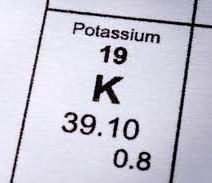March 4th, 2011 by Jeffrey Benabio, M.D. in Health Tips, True Stories
No Comments »

 Hard water is tap water that’s high in minerals such as calcium and magnesium. Hard water isn’t harmful, except the minerals prevent your soap from sudsing. Some people think that hard water is more likely to cause a rash than soft water.
Hard water is tap water that’s high in minerals such as calcium and magnesium. Hard water isn’t harmful, except the minerals prevent your soap from sudsing. Some people think that hard water is more likely to cause a rash than soft water.
Take a recent patient of mine: He moved his family to San Diego from the East Coast (good move this winter, no?) After they moved here, they noticed their skin became dry and itchy. He blamed San Diego’s notoriously hard water and installed a water softener in the main water line. It was costly, but did it improve their skin?
A recent study from the UK looked at this question: Does hard water worsen eczema? The answer was no, it doesn’t. Water hardness did not seem to have any impact on eczema, the most common skin rash.
What’s more important than the hardness of the water is the type of soap you use. True soap tends to strip the skin of its natural oils, leaving it exposed and irritated. Non-soap cleansers, of which Dove is the prototype, leave more oils on your skin, keeping it hydrated and protected.
My patient and his family didn’t get any better after installing a water softener (although he said they could drink our tap water without gagging now.) I advised him to change to a moisturizing soap and to apply moisturizer daily.
San Diego is drier than most of the country, and the low humidity can be a shock to skin accustomed to humid air. Many people who move here find they have to moisturize more often than they did back home. When they complain, I suggest they could alternatively move back to the East Coast this winter — no takers so far.
*This blog post was originally published at The Dermatology Blog*
March 4th, 2011 by Bryan Vartabedian, M.D. in Opinion, True Stories
No Comments »

This week a reporter cornered me on the issue of professional behavior in the social space. How is it defined? I didn’t have an answer. But it’s something that I think about.
Perhaps there isn’t much to think about. As a “representative” of my hospital and a physician to the children in my community, how I behave in public isn’t any different than a decade ago. Social media is just another public space. Sometimes it’s easy to forget that we’re in public. When I’m wrapped up in a Twitter thread it’s easy to forget that the world is watching. But the solution is simple: Always remember that the world is watching.
On Twitter I think and behave as I do in public: Very much myself but considerate of those around me. I always think about how I might be perceived.
Here’s a better question, online or off: What is professional behavior? I have a pediatrician friend who, along with the rest of his staff, wears polo shirts and khaki shorts in the summer. The kids love it. One of my buttoned-down colleagues suggested that this type of dress is “unprofessional.” Or take a handful of physicians and ask them to review a year of my blog posts and my Twitter feed. I can assure you that some will identify elements that they find “unprofessional.” I believe I keep things above board.
This is all so subjective.
The reporter was also interested in how I separate my professional and personal identities in the online space. I’m not sure the two can be properly divided. The line is increasingly smudged. I try to keep Facebook as something of a personal space. I think it was Charlene Li who suggested that she only “friends” people she knows well enough to have over for dinner. That’s evolving as my rule as well. But independent of how I define “well enough,” Facebook is still a public space. My comments and photos can be copied to just about anywhere.
Social media has not forced the need for new standards of physician conduct. We just need to be smarter than we were before. Everyone’s watching.
*This blog post was originally published at 33 Charts*
March 4th, 2011 by Toni Brayer, M.D. in Health Tips, Research
No Comments »

 There are few medical conditions that people fear more than a stroke. We know that blood pressure control and lowering cholesterol levels reduces stroke risk. Now, thanks to a huge analysis from Italy published in the Journal of the American College of Cardiology, we know that higher dietary consumption of potassium is associated with lower rates of stroke and could also reduce the risk of coronary heart disease and total cardiovascular disease, too. What is even more remarkable is that the results apply to all parts of society and not just to specific “at-risk” subgroups.
There are few medical conditions that people fear more than a stroke. We know that blood pressure control and lowering cholesterol levels reduces stroke risk. Now, thanks to a huge analysis from Italy published in the Journal of the American College of Cardiology, we know that higher dietary consumption of potassium is associated with lower rates of stroke and could also reduce the risk of coronary heart disease and total cardiovascular disease, too. What is even more remarkable is that the results apply to all parts of society and not just to specific “at-risk” subgroups.
Most doctors aren’t even aware of how important it is to eat potassium-rich foods. And what are these foods that have potassium? Surprise: It’s fruits and vegetables like bananas, tomatoes, oranges, apricots, most legumes, spinach, winter squash, avocado, kiwi, and cantaloupe. Actually, almost all fruits and veggies have moderate to high potassium content.
The researchers looked a number of well-done studies that included 247, 510 participants over age 30 and found that those patients with the higher potassium intake reduced their stroke risk by 21 percent. The Italian doctors say the protective effect of potassium against stroke is in part due to its blood pressure lowering effects and also due to other properties of the potassium mineral, such as the inhibition of free radical formation.
I’ve written before about the DASH diet, which also found that reduction of sodium and addition of fruits and vegetables to the diet is an effective way to control blood pressure. The DASH diet is high in potassium.
Think about it: Did you have five servings of fruits and vegetables today? Numerous studies have shown their life-prolonging benefits. This new study just adds to what we already know. I challenge all readers to keep a diet count and make sure you are eating five fruit and vegetable servings a day — every day — to help reduce your risk of stroke, cancer, and heart attack.
*This blog post was originally published at EverythingHealth*
March 4th, 2011 by PJSkerrett in Health Tips, News
No Comments »

News that tennis star Serena Williams was treated for a blood clot in her lungs is shining the spotlight on a frightfully overlooked condition that can affect anyone — even a trained athlete who stays fit for a living.
Williams had a pulmonary embolism. That’s doctor speak for a blood clot that originally formed in the legs or elsewhere in the body but that eventually broke away, traveled through the bloodstream, and got stuck in a major artery feeding the lungs. (To read more about pulmonary embolism, check out this article from the Harvard Heart Letter.) Pulmonary embolism is serious trouble because it can prevent the lungs from oxygenating blood — about one in 12 people who have one die from it.
“No one is immune from pulmonary embolism, not even super athletes,” says Dr. Samuel Z. Goldhaber, professor of medicine at Harvard Medical School and one of the country’s leading experts in this clotting disorder.
Pulmonary embolism tends to happen among people who have recently had surgery, been injured, or been confined to bed rest for some time. It can also strike after long-haul flights.
Signs of a PE
How do you know if you’re experiencing a pulmonary embolism? The most common symptoms include shortness of breath when you aren’t exerting yourself, along with chest pain and coughing up blood. If you experience any of these symptoms, see a doctor immediately. Other worrisome signs include:
- Excessive sweating
- Clammy or bluish skin
- Light-headedness
- Fast or irregular heartbeat
The tennis star’s pulmonary embolism could have been the result of the perfect storm. After having a cast removed from a foot she cut at Wimbledon, Williams flew from New York to Los Angeles. It was in LA, after an appearance at the Oscars ceremony on Sunday, that she underwent emergency treatment at Cedars Sinai Hospital for a blood clot in her lungs.
A call to action by the U.S. Surgeon General says that pulmonary embolism and a related condition — deep-vein thrombosis — affect an estimated 350,000 to 600,000 Americans each year. Together, they account for somewhere between 100,000 and 180,000 deaths each year.
To learn more about pulmonary embolism, check out this information from the North American Thrombosis Forum.
– P.J. Skerrett, Editor, Harvard Heart Letter
*This blog post was originally published at Harvard Health Blog*
March 4th, 2011 by DavidHarlow in Health Policy, Opinion
No Comments »

Medicaid has been front and center this week as President Obama addressed the National Governors Association, and several governors testified before the House Energy and Commerce Committee. Obama told the governors that he supports the Wyden-Brown bill, which would accelerate the availability of waivers under the Affordable Care Act (ACA), so that states would not have to first create health insurance exchanges under the law, and then have the right to dismantle them and replace them with other mechanisms to achieve coverage goals of the law without additional cost to the federales. (See Wyden-Brown fact sheet.) The sponsors’ home states, Oregon and Massachusetts would otherwise have to dismantle parts of their own health reform efforts in order to align with the federal mandates. (Wyden has been a longer-term proponent of experimentation and innovation in health reform.)
The mini-med waivers granted to states (in addition to those granted to corporations and unions) are just one example of interim steps needed to harmonize federal and state health reform. When in 2014 mini-med plans will no longer be permitted at all under the federal health reform law, there will either need to be a significant dislocation of the underinsured “Young Invincibles” in Massachusetts and underinsured employees in capped health plans elsewhere in the country, or a change in the law.
Similar difficulties await state Medicaid programs, which will be faced with expanded eligibility, and other state agencies, which will need to set up exchanges per the ACA. The cost associated with eligibility expansion will be overwhelming — or maybe it won’t. There are, of course, expert opinions across the board on the financial impact of health reform on state budgets. As the saying goes, “Where you stand depends on where you sit.” Some reports inflate state expenses by not accounting for the fact that the federal share of Medicaid expansion covers 92 percent of the total. Read more »
*This blog post was originally published at HealthBlawg :: David Harlow's Health Care Law Blog*
Hard water is tap water that’s high in minerals such as calcium and magnesium. Hard water isn’t harmful, except the minerals prevent your soap from sudsing. Some people think that hard water is more likely to cause a rash than soft water.
















